The first thing to know about this fascinating city is that it’s not pronounced anything like it looks. Names of Mexican towns can be tricky, and this one is no exception: practice saying "Wa-hock-a." Just to be clear, the city of Oaxaca is the capital of the state bearing the same name, somewhat like New York, New York.
We first passed through Oaxaca on our first Mexico motorcycle trip in 2022. After touching down in about 30 different cities and villages (we logged around 11,000 miles total), Oaxaca warranted a second look. After a month-long visit in winter 2023, we were smitten. So, in the fall of 2023, we rode the bike back to Oaxaca and just wrapped up an eight-month visit to test out various neighborhoods. This trip sealed the deal for us: Oaxaca will be our new hometown as of October 2024.
Get Your Free Mexico Report Today!
Get Your Free Mexico Report Today!
Learn more about Mexico and other countries in our daily postcard e-letter. Simply enter your email address below and we’ll send you a free special report – Mexico: The Perfect Close-to-Home Retirement Haven.

By submitting your email address, you will receive a free subscription to IL Postcards, Overseas Dream Home, The Untourist Daily and special offers from International Living and our affiliates. You can unsubscribe at any time, and we encourage you to read more about our Privacy Policy.
After we answer the very first question, everyone asks, “Is Mexico safe? And on a motorcycle?” people move on to question #2, “Why Oaxaca?” It really checks a lot of boxes for us, ranging from its great weather, its walkability, the colonial architecture, its extensive culinary scene, the easy social networking, the traditional, culturally rich neighboring villages, and the sweetest, most accommodating Mexican people. As though all that isn’t enough, now that a road linking Oaxaca with the Pacific coast has been completed, it means getting to the beach is just a three-hour road trip.
1. Immerse Yourself in a Rich and Vibrant Culture
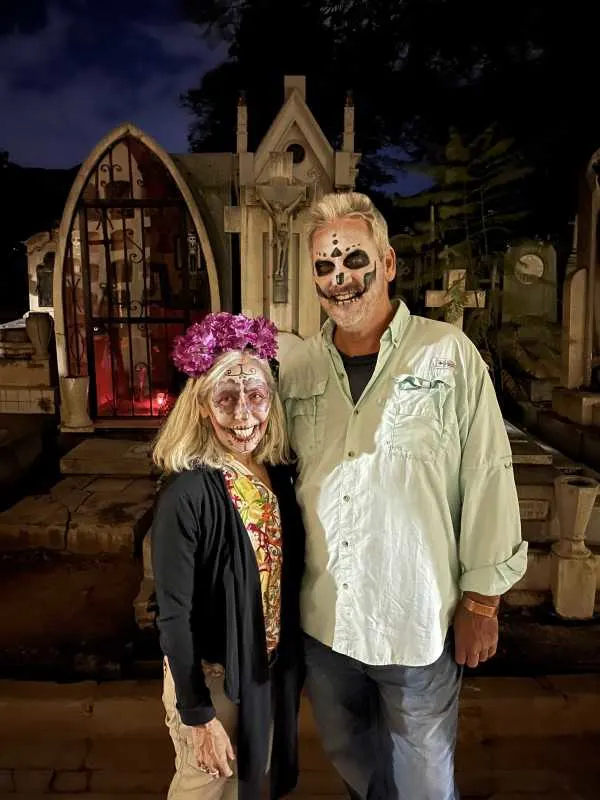
At the beginning of our eight-month trial run, we wondered how we would keep busy. Well, that wasn’t much of a problem. This vibrant, sometimes very noisy city generates a high-energy vibe, meaning there is always something going on. You can hang out in the zocalo watching Mexican local life unfold or join in on one of the many “calendas.” Calendas are street processions that take place for holy days, marriages, graduations, and just about any celebratory event you can imagine, often with free shots of mezcal served along the way.
Two of the more well-known festivals drawing crowds from across Mexico and abroad include Dia de Muertos (Day of the Dead) and Guelaguetza, celebrated on November 2nd & 3rd and the last week of July, respectively. Our Spanish language school (Hola Latin) organized a variety of Dia de Muertos activities, giving us an authentic understanding of this event. Building an altar, getting faces painted, and visiting local cemeteries to speak with families showed us how Mexicans celebrate their departed loved ones.
Guelaguetza is Oaxaca’s most traditional cultural event. It celebrates the eight regions of the state through dance performances, food, music, and art. It showcases the diversity of the various Indigenous communities while sharing the common theme of thanking the gods for rainfall and a good harvest.
In addition to these festivals, Oaxaca’s cultural richness extends to its neighboring villages. A 45-minute drive in any direction will land you in a village, each specializing in its own local artisan craft. San Bartolo Coyotepec is known for its black pottery (barro negro), while San Martin Tilcajete is where you can watch artisans create alebrijes, wooden animal carvings painted with the most seemingly impossible intricate detail. I like to wear my art, so buying earrings in the alebrijes style is my go-to, and they make great compact gifts.
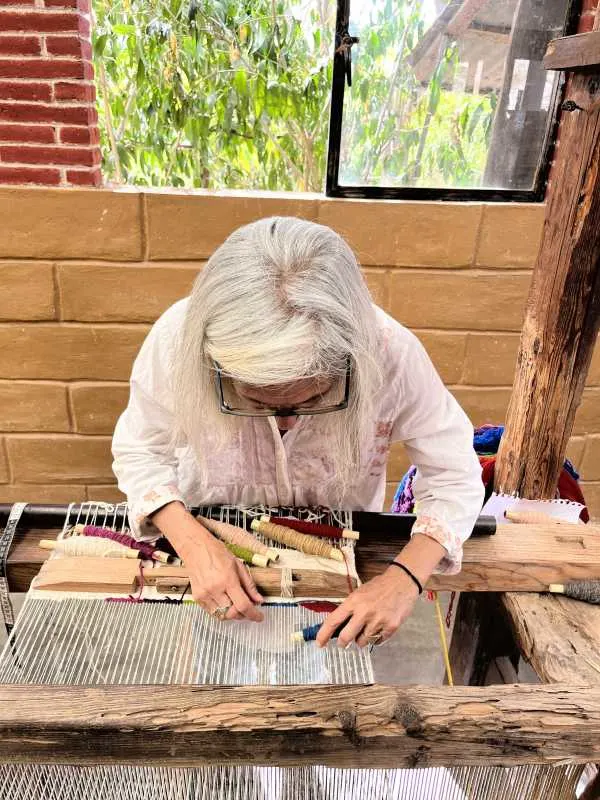
One of my favorite villages is Teotitlan de Valle; I did a 10-day homestay with a family there that cemented my relationship with them (we are sponsoring private education for one of the children) and the village. This is where weaving on ancient looms produces those gorgeous wool rugs, wall tapestries, purses, and other decorative items. A hands-on visit where you get to work on a loom and leave with a small product of your work should be on everyone’s to-do list.
2. Enjoy a Cost-Effective and Practical Lifestyle
Aside from festival hopping and learning local culture, there’s the more practical side of living abroad: what will it cost to live there? Renting or buying a property in Oaxaca has gone up over the past few years, similar to any other desirable location in the world. And it’s no surprise that places with more expats skew toward a higher overall cost of living.
But a higher cost of living compared to what? Whether or not you think Oaxaca is a cost-effective place to live will depend on where you’re moving from. For us, we think Oaxaca is still a bargain because we’re leaving Key West, FL, and Colorado, two very expensive real estate markets. If you’re moving from a small town in the Midwest, the reduced housing costs may not seem as dramatic.
We rented short-term Airbnbs, which are more expensive than a long-term arrangement. Even so, $1200/month rent to be within walking distance of everything is reasonable in my book. But for expats who have been accustomed to $800/month rent, there’s a lot of discontent. Because we renovate and flip houses in the US, we spent a great deal of time looking to buy and renovate a house and plan to resume that process when we return.
Even with my limited Spanish, I was always able to negotiate a better rental price directly with owners. I’m ecstatic about our upcoming six-month lease for a three-bedroom/three-bathroom house with a rooftop terrace in the trendy Jalatlaco neighborhood for $1250/month. Living on the outskirts in a more rural setting can significantly reduce your housing costs, as will your demand for creature comforts. Quality of the furniture, air conditioning, and a large cistern to ensure a water supply are items that will factor into your housing costs.
Having spent months learning the ropes about housing, renovations, legal issues, and how to find your niche, it seemed that a travel planning and relocation service specific to these needs would help others shortcut the process.
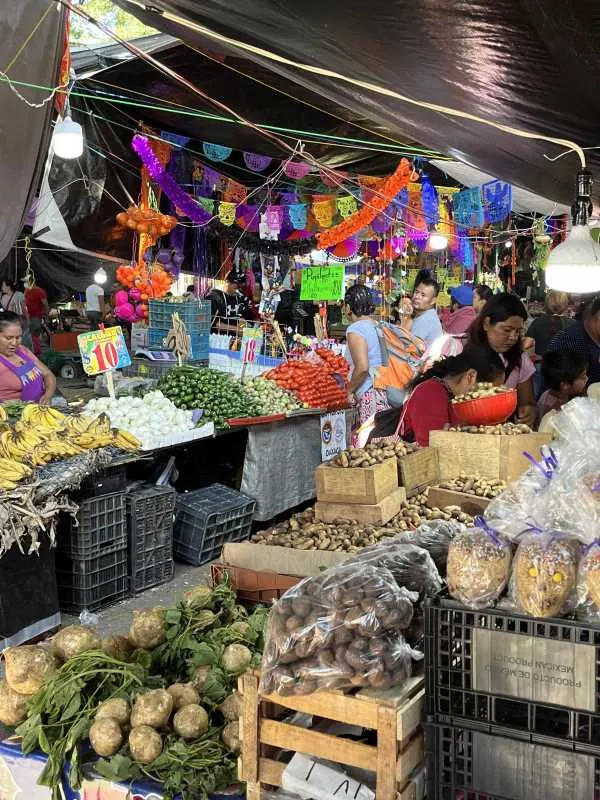
Once you nail down housing, which is always the biggest chunk of a monthly budget, the rest is easy. Groceries, dining out, and local transportation are inexpensive if you live like a local. I prefer shopping at the mercados on an every-other-day basis with the bonus of practicing real-world Spanish. Oaxaca has retail chains for other purchases, but when I’m looking for something special, I head to Chedraui. This higher-end store has its newest location in the Reforma neighborhood, and it’s pretty amazing—think Whole Foods meets Target.
Because we travel by motorcycle, getting around is not a problem for us. When I’m going somewhere solo, I gladly take the bus, which costs about 40 cents within the city. Bus routes go to points further out of town and are heavily used by commuting adults and kids. Buses are a great option for day trips out of town if you don’t want the expense of a private driver. Taxis are plentiful and cost about $3 to $4 to go anywhere within the city center area.
3. Delight in Oaxaca’s Culinary Wonders
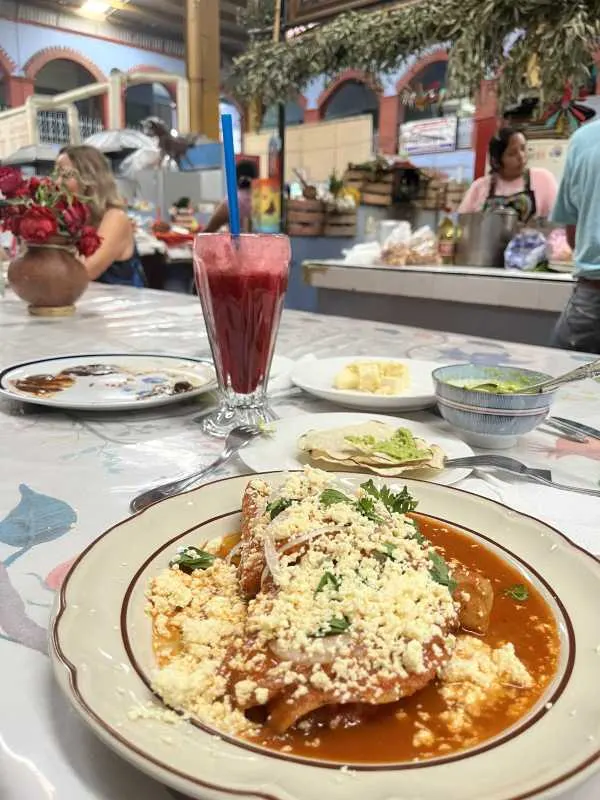
Oaxaca will shatter any preconception you may have had about Mexican food. The flavors and ingredients are so much more diverse and interesting than I had imagined, and that’s coming from someone who had a culinary career.
Oaxaca’s culinary claim to fame is all about the seven distinctly different moles—an intricate mix of ingredients forming a sauce that’s the bedrock of Oaxacan cuisine. From street carts to fine dining, moles are everywhere, including vats of it at the mercados for at-home cooking.
Tlayudas (it took me a year to pronounce that “tl” consonant combo) are another Oaxacan staple. An enormous crispy-textured tortilla is usually topped with a refried bean mix, a slather of pork lard, shredded meat, lettuce, and avocado, and cooked over an open fire. While tlayudas require a knife and fork, Oaxacan tamales are a perfect hand-held food. Both sweet and savory versions are sold on street corners by local women.
In addition to the amazing food, you have also entered the land of mezcal, the locally produced spirit that everyone thinks is like tequila, but really it’s not. Mezcal tastings and distillery visits will definitely be on your things-to-do list.
Beyond the traditional Oaxacan fare, the city offers a wide range of dining options. Restaurants run the gamut to include all kinds of ethnic cuisines as well as local Oaxacan dishes. So, if you ever thought you would get tired of eating the same Mexican foods over and over, think again. Aside from tons of restaurant choices, eating out can be a good value relative to the food quality. We eat out a lot more often than we ever would back home. Even a higher-end dining experience in a beautiful setting will set you back $60 to $70 for two people, including drinks. We can’t do anything comparable in Florida or Colorado for less than $130. Grabbing a quick meal for two at the right places can be done for $20 to $25.
Eating at food carts is a staple for locals no matter what time of day. We quickly got into that routine and realized it’s just as cheap (if not cheaper) than cooking at home. We have our favorite truck for tortas (sandwiches), the pick-up truck with the killer tacos (including tongue, liver, and more common animal parts), and the ladies selling empanadas for $1. If you’re going to live in Oaxaca, embrace this aspect of the food culture; otherwise, you’re really missing out.
But there’s another dining option somewhere between restaurants and street carts, and that’s eating at the mercados. Nothing beats a sit-down freshly prepared meal at a mercado, especially at Mercado 20 de Noviembre. Locally called “the hall of smoke,” this is how it works: you meander through a hall lined with women fanning flames and grilling an assortment of meats; you make your meat selections, then choose your side dishes displayed in a case. Once decisions have been made, you’re shoe-horned into a booth with other folks, tortillas are passed out, and the main meat attraction arrives. Go hungry or go home.
Get Your Free Mexico Report Today!
Get Your Free Mexico Report Today!
Learn more about Mexico and other countries in our daily postcard e-letter. Simply enter your email address below and we’ll send you a free special report – Mexico: The Perfect Close-to-Home Retirement Haven.

By submitting your email address, you will receive a free subscription to IL Postcards, Overseas Dream Home, The Untourist Daily and special offers from International Living and our affiliates. You can unsubscribe at any time, and we encourage you to read more about our Privacy Policy.
4. Experience Diverse Landscapes and Outdoor Adventures
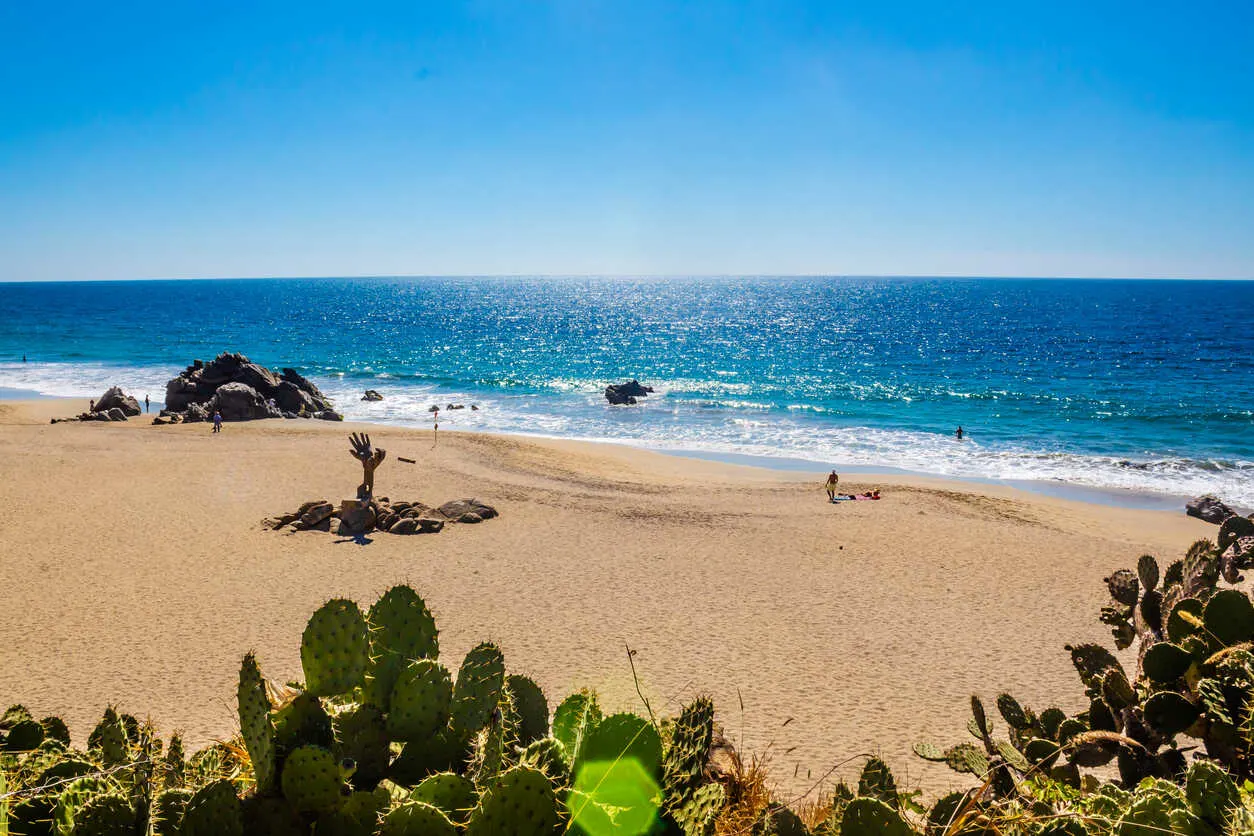
Situated at around 5,000 ft elevation, Oaxaca has, in our opinion, an ideal climate: moderate daytime temperatures, slightly cooler at night, and hardly a speck of humidity. Renting or buying a property with a rooftop terrace means you’ll have a non-stop 360-degree view of the mountains surrounding the city.
Within a one-to-two-hour drive, you’ll find a cluster of villages in the Sierra Norte mountains known as Pueblos Mancomunados. These pueblos share a common goal as stewards of the land by practicing sustainable forestry and promoting ecotourism activities. In addition to growing coffee and other organic crops, these communities offer cabins for rent and a variety of outdoor fun, such as guided cave walking and waterfall tours.
Similarly, to the south of the city in the Sierra Sur mountains lies more of these villages, the most well-known being San Jose del Pacifico. If you’re into magic mushrooms, this is the place to be. After all, John, Paul, George, and Ringo were known to frequent SJDP.
Just driving through these areas and admiring the landscape is a beautiful day trip. Riding these curvy mountain roads on a motorcycle is spectacular and no less fun behind the windshield of a car. But if you’re prone to car sickness, prepare yourself ahead of time. If you’re looking for an outing even closer to home, then do a day trip to the petrified waterfalls at Hierve de Agua or the Monte Alban archeological zone. Within minutes of leaving the city center, the agricultural landscape ranges from avocados to agave.
Because the new highway linking Oaxaca City to the Oaxacan coastline is now fully open, you can truly have the best of both worlds: city life and the beach! There’s a smattering of small beach towns as you hit the Pacific, each with its own personality. Puerto Angel, Mazunte, and Zipolite, to name but a few, all offer beachside lodging, restaurants, nearby hiking, and fairly calm waters (depending on the time of year).
Flanked to the east of these is Hualtuco, known for its nine bays and 36 beaches. It’s a well-developed tourist destination complete with a cruise ship port. We visited for a few days, thinking at the time we might want to settle down in a coastal town. Hualtuco has a large expat community, primarily made up of Canadians, but the town just wasn’t for us. We weren’t interested in swapping Key West, a tourist town with cruise ships, for a similar scene in Hualtuco.
Farther to the west of those small beachy places is Puerto Escondido, surf town and party central. Though the crowd is typically much younger than us, there is a retired expat community and lots of seasonal snowbirds. We like the sandy dirt streets and the fact that there are no high-rise condos or resorts. The ocean was warm enough for us in January, and that’s saying a lot. There are turtle restoration projects to visit and waterfalls as hiking destinations. The vibe is just what you’d expect from a surf town; casual, low key, a tinge of hippiness, and restaurants ranging from vegan to Thai and just about anything you might want. Prices on the coast are slightly more expensive than what you’ll find in Oaxaca, but they don’t seem way out of line to us.
5. Find Your Tribe in a Welcoming Community
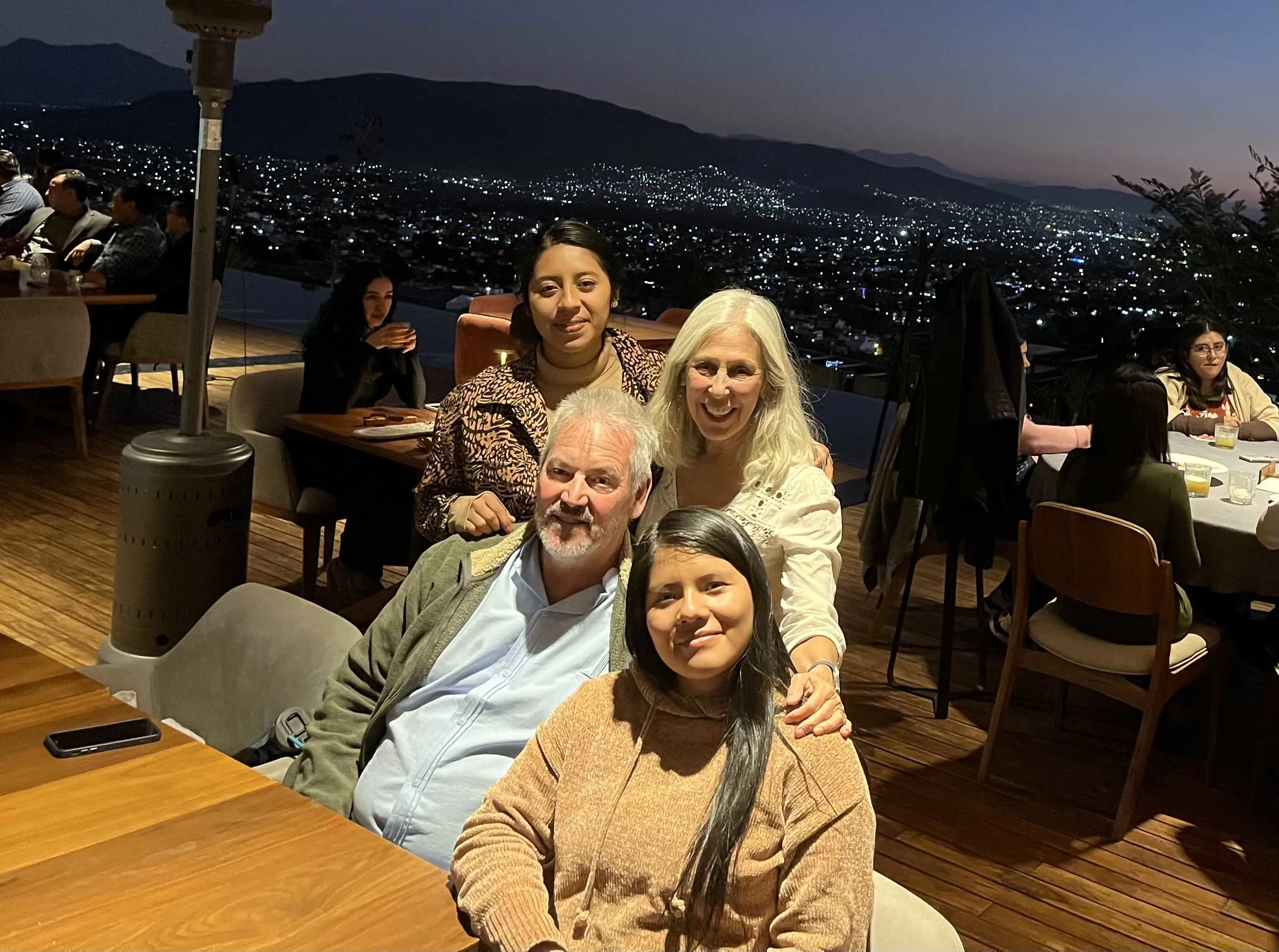
One of Oaxaca’s most important characteristics, in our view, is that it feels very Mexican compared to other places with a similar amount of infrastructure. Though there is definitely an expat community and plenty of tourists, the city seems large enough (around 700,000) to absorb foreigners. While many expats look to replicate the lifestyle they just left and build an expat-only social circle, we are leaving the US to have a very different life experience. Everyone looks for something different when moving abroad, and you can be on either end of this lifestyle spectrum in Oaxaca.
We were hoping for a diverse and eclectic social circle, and that’s exactly what we got because that’s exactly what we sought out. Our friends include Mexicans, established expats, and new transplants, but it’s the cross-generational makeup of the crowd that we especially love. Our social network includes Mexican 20-somethings, mid-career Canadian and American digital nomads, a Mexican policeman, and the Zapotec family (mentioned above), to name just a few.
Moving to a new neighborhood can be intimidating in your own country, never mind in Mexico, where you may be starting with limited Spanish skills. The language has never really been a barrier, but we were in classes for seven months, making a full-on effort. Language challenges aside, we started networking in obvious places like the Oaxaca Lending Library, which is ground zero for expats. From there, we found out about music events, lectures, and art openings happening around town.
But it’s the random events that often yield the best-unexpected relationships. While shopping at a mercado, a Mexican policeman who had lived in the US asked if he could practice his English with us. We stayed connected and were invited to lunch at his village home to meet his family. Similarly, our young Mexican translator friends have invited us to their parent’s homes for holidays and birthdays, and with whom we attended the most unbelievable cultural extravaganza party until 4 a.m. Even though the parents were younger than us, spoke zero English, and the kids weren’t there, it just didn’t matter.
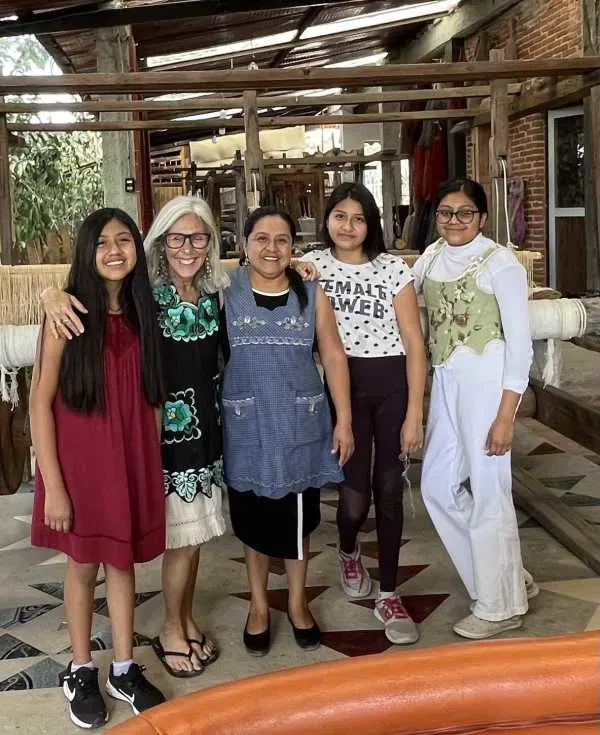
In general, Oaxacans are the most pleasant and accommodating people. We found owners to be responsive if there was a need or a problem with their property. We would often meet a former landlady for lunch. We didn’t understand much of our conversations, but that’s ok; it’s how you learn.
Our new best friend, Luis, has a charming set of Airbnbs where we stayed in the desirable Xochimilco neighborhood. Luis couldn’t do enough for us; dinner at his house, airport pick-ups for arriving friends, and even after we left town, he was there for us. The paperwork for our BMW motorcycle, still at the dealership for repairs, was handled by Luis, streamlining what would have been a difficult payment process. Sweet, helpful, and considerate people, no doubt about it.
Final Thoughts
Clearly, we are fans of Oaxaca, although it’s not without its challenges. A consistent and reliable water supply to homes and businesses is on everyone’s mind. Traffic in town can be awful during school drop-off and pick-up hours; there are no school buses. And there are some grumbling sentiments among some locals about foreigners moving in and driving up the price of everything. I complain about the same thing in Key West as it turns into an island for high-end vacation homes. Nothing is perfect, but for us, Oaxaca seems to have just the right mix of everything we like.
Get Your Free Mexico Report Today!
Get Your Free Mexico Report Today!
Learn more about Mexico and other countries in our daily postcard e-letter. Simply enter your email address below and we’ll send you a free special report – Mexico: The Perfect Close-to-Home Retirement Haven.

By submitting your email address, you will receive a free subscription to IL Postcards, Overseas Dream Home, The Untourist Daily and special offers from International Living and our affiliates. You can unsubscribe at any time, and we encourage you to read more about our Privacy Policy.
About the Author
Donna Shields is a registered dietitian and former culinary writer now exploring Mexico by motorcycle. Open Mind Adventures offers travel planning, relocation, and home renovation services for those making the leap to Oaxaca on a scouting trip or just going for a good time. Patterned after the long-running Key West Food & Wine Festival, plans are in the works for a 2025 Oaxaca Food, Wine & Mezcal event. Contact Donna at openmindadventure1@gmail.com .
